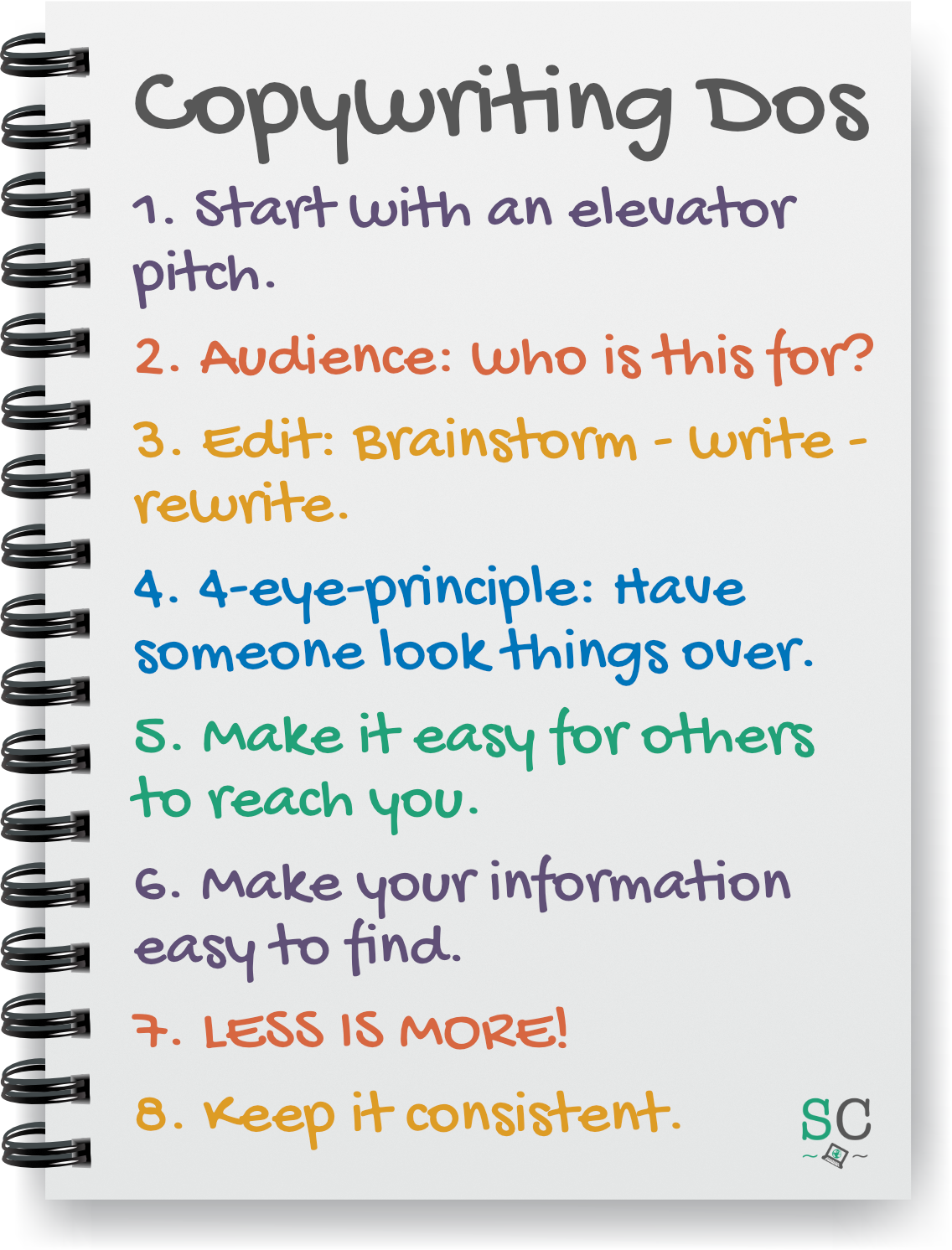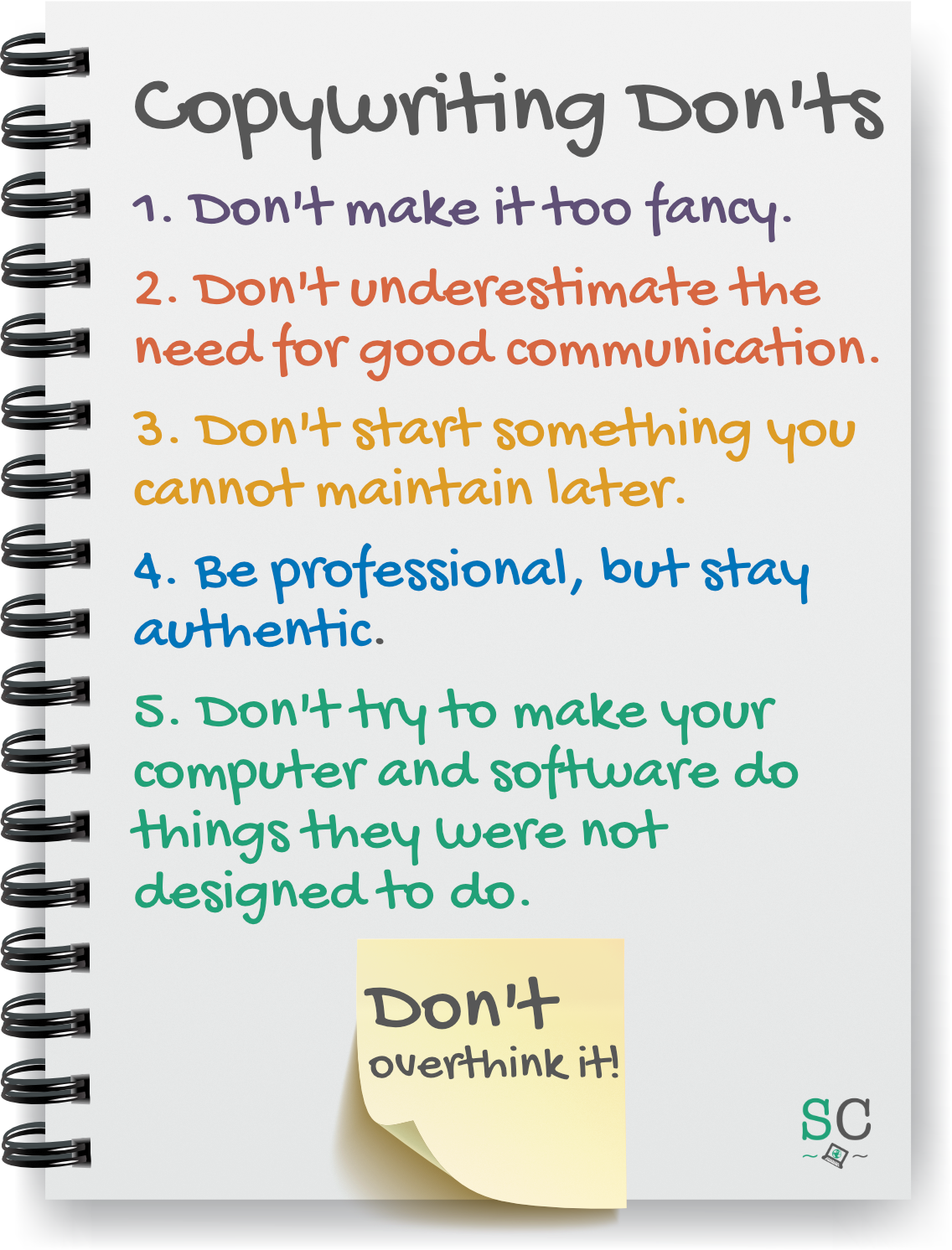What to keep in mind and things to avoid
hidden for layout purposes
Common sense and practice
 The other sections in this topic mention Best Practices throughout. In this section, we’ll combine all of them into one document. Volumes have been written on the “how to” of copywriting, blogs have come and gone on the subject. At the end of the day, what it takes is some common sense and practice. When you work creatively, with any medium and in any genre, you should never be so self-absorbed or sensitive to think that none of your work needs any scrutiny. On the contrary, the more people who look at it (while avoiding indecision by committee), the better, before you put it in front of the world.
The other sections in this topic mention Best Practices throughout. In this section, we’ll combine all of them into one document. Volumes have been written on the “how to” of copywriting, blogs have come and gone on the subject. At the end of the day, what it takes is some common sense and practice. When you work creatively, with any medium and in any genre, you should never be so self-absorbed or sensitive to think that none of your work needs any scrutiny. On the contrary, the more people who look at it (while avoiding indecision by committee), the better, before you put it in front of the world.
Collapse All
Tips (Dos)
- If you have never written anything for brochures, newsletters etc., start with composing an elevator pitch as a first exercise.
- Before you sit down to write your next blog article or sales letter or landing page, ask yourself: “Who’s this for? What do they want or need?” And, perhaps: “What would Kurt do?” If you don’t know the answer to those questions, (re)visit Kurt Vonnegut’s tips for effective writing.
- Always take the time to properly plan what you’ll be writing.
- Brainstorm
- Write
- Revise, refine and rewrite
- 4-eye principle: another person should always edit your work. Keep an open mind to input from others.
- Always make it easy for your audience to reach you.
- Make your information easy to find.
- Less is more, and white space is your friend.
- Keep your message and your visual appearance consistent across mediums.
[Click here to close]
Traps (Don'ts)
- A brochure or other printed piece does not have to be shiny or fancy. On the contrary, this can be a turn-off for potential donors or volunteers, because they have to assume that what they are donating goes into these shiny brochures etc., rather than benefiting the cause.
- Don’t underestimate the need for good communication, especially if you are asking for people’s time and money. There are others out there who do it better, and they will get the funds and volunteers if you lapse on that front.
- Don’t start something you cannot maintain. If you have a blog or a website, people will expect it to be up-to-date. An outdated website stating it was last updated two years ago is worse than only having a well-maintained Facebook page.
- If you have a web presence, it needs to look and sound authentic, but it should also look professional. Avoid jargon, cuss words etc. The same applies to printed materials. Utilize the tools at your disposal to their fullest.
- Don’t try to force your writing software to be something it isn’t. Microsoft Word is not Excel. Likewise, PowerPoint is not Word. Etc. Whatever you are using to write and design, keep in mind what it was made for in the first place. While these programs have certain capabilities beyond their primary use, forcing them to be more than this is the proverbial square peg/round hole scenario. It will cause a lot of unnecessary headaches.
[Click here to close]


